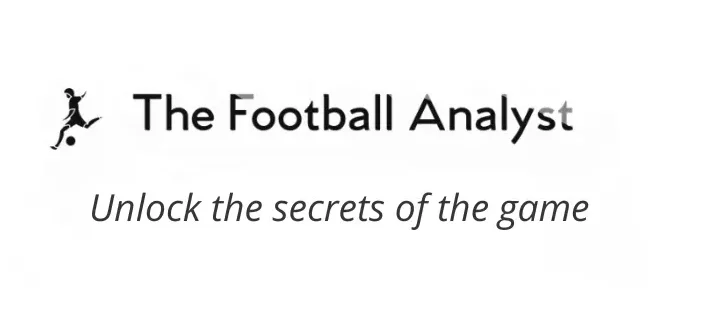In the modern game, set pieces have become decisive weapons for breaking down organized defenses. Among them, the attacking corner kick remains a golden opportunity to generate high-quality chances — not just through delivery, but through coordinated movement, disguise, and player roles. This article explores the deeper mechanics of offensive corners, from the timing of runs to the synchronization of roles, and how to maximize space-time advantages in the box.
Understanding Movement Mechanics
Effective offensive corners rely on the interplay of several structured movements. These are designed to disrupt the opponent’s marking schemes — whether zonal, man-oriented, or hybrid — and create windows for finishers to attack.
1. Blocking
A well-executed block creates a critical time-space advantage. One player deliberately obstructs the path of a marker, preventing them from tracking the targeted runner. This movement is usually carried out face-to-face, but subtly. The key is deception — don’t give the intention away too early. By isolating in a 2v2, the blocking player clears the way for the teammate to attack the ball unimpeded.

Tip: Blocking a zonal defender can be especially valuable, as these players are often responsible for clearing aerial deliveries. Neutralizing them increases the probability of a successful attempt.
2. Crossing Runs
Crossing or “criss-cross” runs force hesitation and hesitation leads to space. When two or more players execute synchronized runs that cross paths, the defensive line must decide whether to switch markers or follow — either choice introduces uncertainty and often causes a delay in reaction. The attacker maintains their sprint, while the defender’s momentary pause puts them at a disadvantage.

3. Dragging (Space Creation)
Dragging movements involve one or more attackers intentionally vacating zones to attract defenders away from key areas. This tactic is often used to isolate a target finisher in a 1v1 or to empty the near post or penalty spot zones for a late-arriving attacker. These decoy movements can be subtle or dramatic, depending on the plan.

4. Overloading
By concentrating attackers in a single area — typically the near post, far post, or penalty spot — you test the density and decision-making of zone defenses. Overloads exploit numerical mismatches and increase the likelihood of second balls or deflections falling to your players. This can also draw defenders away from other zones, setting up surprise switches of play or inswingers aimed at the back post.

The Importance of Timing
The success of all the movements above depends on choreography. The best corner routines aren’t just a collection of individual actions — they’re interwoven patterns where blockers, draggers, and runners move in perfect sync with the shooter’s delivery. An early block or a late sprint disrupts the rhythm and reduces the chance of a clean finish.
A well-timed corner might involve:
- A short-pass decoy
- A two-player drag to empty a central zone
- A late far-post run by the reference finisher
- An inswinger aimed at the newly opened space
Every element needs to occur in sequence and at the right tempo.
Functional Roles in Offensive Corners
Beyond movement, each player has a functional role. These roles are dynamic and interdependent — knowing your role and how it links to the others is essential for success.
1. Shooter
More than just the deliverer of the ball, the shooter is a decision-maker. They must assess the defensive setup — man, zone, or hybrid — and choose the correct delivery: direct or short, near or far post, outswinger or inswinger. Shooters often use visual or verbal cues to signal specific plays. They need strong technique, composure, and tactical intelligence.
2. Short-Option Player
This player is stationed near the corner flag and serves as a decoy or quick-passing outlet. They must adapt in real-time — receiving for a 2v1, dragging a defender out, or reacting to a clearance. Creativity, one-touch play, and game awareness are key traits here.
3. Finisher
These are your primary aerial threats. Positioned inside the box pre-kick, finishers must read the timing, detach from their marker, and meet the delivery at pace. The best finishers don’t just jump high — they anticipate movement, attack space, and finish with precision. Not all good headers are good finishers from corners — the nuance lies in movement and instinct.
Within this category, we often distinguish:
- Reference Finisher: The main aerial target.
- Facilitator: A support runner who helps create space (via dragging, screening, or occupying defenders) for the reference finisher.
4. Clearing Player
Positioned outside the box, the clearing player is a hybrid — tasked with:
- Reacting to cleared balls for second-phase attacks
- Preventing opponent counter-attacks
- Occasionally joining the attack as a surprise runner
They must be alert, mobile, and strong in duels. A good long-range shot and passing vision also add value.
5. Defensive Safeguard(s)
One or two players must remain deeper, often marking the opposition’s high winger or striker. These players provide balance and security. If the opponent counters, they are the first line of defense. They need sprinting speed, good positioning, and the ability to win recovery duels.
Final Thoughts
Attacking corners are more than just aerial contests — they are mini-plays within a match. Every movement, every block, every signal is rehearsed to break down a highly organized opponent. Success lies in:
- Clarity of roles
- Cohesion of timing
- Variation in delivery
- Ability to adapt based on the defensive scheme
As the modern game evolves, so must set-piece strategies. Whether you’re a coach designing routines, a player refining movement, or an analyst studying trends — understanding the nuances of these details is what separates good from great.
